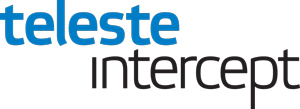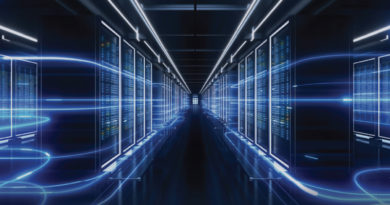How Can Cable Operators Improve Sustainability?
By Pasi Järvenpää
The insatiable demand for bandwidth, the growing need for reliability, competitive dynamics, and the need to expand their footprint are driving operators to massively invest in their network infrastructures and operations. As they do that, they need to consider the meaningful impact of their businesses on the environment and society; they need to make sustainability a strategic goal and to select solutions and vendors that will enable them to achieve these goals.
Cable operators, particularly in North America, are densifying and expanding their footprint to meet the growing needs of the market, to remain competitive, and to better serve underserved and under-penetrated areas, particularly as ample government funding has become available for these initiatives. However, these network upgrades need to happen in the context of sustainability goals which to date have been self-imposed but are increasingly becoming important not only to the industry’s various stakeholders but also to regulators.
The insatiable need for bandwidth, particularly in the access network has accelerated, as more bandwidth-hungry services are delivered in residential and business settings, including streaming downloads and other data-heavy services. Cable operators have been racing to add capacity, both downstream and upstream, using strategies such as node splits, spectrum mid-split and high-split, and distributed access architectures, while pursuing longer term strategies such as DOCSIS 4.0 which will enable them to significantly increase upstream capacity and to deliver symmetric bandwidth.
Growing importance of sustainability
But as they add capacity, operators need to also meet increasingly stringent sustainability requirements. Although it is true that the industry has been seeking ways to reduce power consumption, the sharpened focus on sustainability by investors, shareholders, regulators and consumers will drive operators to make sustainability a key strategic goal and to seek solutions that enable them to meet that goal.
The focus on sustainability was somewhat shifted to the sidelines during the pandemic, as people’s attention turned to avoiding COVID-19 spread, even if it meant increasing the use of plastics and resorting to less environmentally friendly strategies. However, there is now a renewed focus on sustainability, as was demonstrated during the COP26[1] meeting in Glasgow in November 2021. Also, the interest of individual citizens towards sustainability is rapidly reviving. For example, at DuPont, a shareholder resolution asking the company to track plastic pollution better got 81% support[2].
In fact, Larry Fink, chairman and CEO of BlackRock, in a letter to investors in January 2022 said: “There is no company whose business model won’t be profoundly affected by the transition to a net zero economy… companies not quickly preparing themselves will see their businesses and valuations suffer[3].”
In regard to formalizing sustainability efforts and increasing transparency, the US Securities and Exchange Commission recently announced that it would require publicly traded companies to report greenhouse-gas emissions from their own operations as well as from the energy they consume, and to obtain independent certification of their estimates[4].
The telecommunications industry accounts for 3 to 4% of global CO2 emissions, about twice that of civil aviation. This share is expected to increase as global data traffic continues to grow at a double-digit pace[5], with a definite impact on carbon footprint. This said, it is worthwhile noting that the industry also contributes to reducing carbon emissions by enabling remote connectivity and digital services. Still, for the most part, the industry leaders have been somewhat unenthusiastic to make sustainability a strategic imperative, but this is changing given pressure from stakeholders.
How to achieve sustainability
There are multiple approaches cable operators need to pursue as they strive to improve their sustainability:
Improve product performance to decrease energy consumption
A fundamental approach to reduce carbon footprint is to adopt intelligence and automation in the network. Operators have started introducing intelligence in headends and hubs with virtual CCAPs, network management and other network elements. In fact, the distributed access architecture reduces power consumption in headend and hubs, and enables their virtualization.
However, there has been less focus on the “outside plant” which accounts for a sizable portion of energy consumption. For example, traditional amplifiers are prone to signal degradation and fluctuation, and must be addressed in person by technicians who perform complex signal sweeps and other remediation methodologies. Not only are these strategies inefficient and use scarce labor capital, but they are also detrimental to the environment due to, for example, truck rolls.
Intelligent amplifiers, on the other hand, have features such as automatic level and slope control (ALSC) and intelligent return path control based on forward path measurement known as the Return Follows Forward principle or return ALSC[6]. These features enable amplifiers to self-align, resulting in signal quality that is always optimal, reducing carbon emissions.
Another important capability to look for in amplifiers and other network components is power factor correction (PFC). This is the ability to reduce reactive power, that typically does not do “any useful work[7].” PFC improves power quality as it reduces the AC current on the electrical distribution system, resulting in reduced electricity consumption and increased energy efficiency.
Work with suppliers who have made sustainability a goal and a core competency
Although decreasing power consumption and truck rolls is a major imperative towards reducing the carbon footprint, there is more that an operator can do to improve its sustainability status. It can select suppliers and vendors who have designed their manufacturing and business processes with sustainability in mind. This can include[8]:
- Eliminating the use of plastics from product packaging and replacing it with non-colorized cardboard.
- Use shipping packaging that is fully recyclable and made from already recycled materials whenever possible.
- Ensure that packaging is optimized for pallets to increase transportation efficiency.
- Commit to ethical and environmentally friendly operations.
- Strive for efficient and sustainable use of water, energy, and materials.
- Make positive environmental impact a core principle in the design, manufacturing, and entire product lifecycle. This includes energy efficient solutions, but also ones that are durable and that can be operated and maintained with optimal carbon emissions.
These are some of the actions a vendor can pursue to improve sustainability, but more can be done as this is a relatively new area that is ripe for innovation. What is most important is that the vendor has a demonstrated long-term commitment to sustainability, and that it has already been “walking the talk.” A sustainability “pedigree” is not born overnight, but is the result of years of research, innovation, trial, and error, and most importantly a laser focus in every part of the company.
Conclusion
Sustainability is no longer a nice to have for cable operators, it is a strategic imperative and increasingly a necessity that shareholders, customers, regulators, and the community will insist on. As operators seek to reduce carbon emissions and improve impact on society and the economy, they need better solutions that are designed with embedded intelligence and automation, that rely on software for optimized operations and reduced energy consumption; they also need to work with vendors who have made sustainability part of their DNA, and they need to embed sustainability into their operations, organization, and overall business strategy. Not only is this a must, but it will become a source of long-term competitive advantage.
[2] https://hbr.org/2021/12/sustainable-business-went-mainstream-in-2021
[3] https://www.blackrock.com/corporate/investor-relations/larry-fink-ceo-letter
[5] https://www.bcg.com/publications/2021/building-sustainable-telecommunications-companies
[6] https://www.telesteintercept.com/achieving-end-to-end-intelligence-in-the-cable-access-network
For more information, see Teleste Intercept website https://telesteintercept.com


Pasi Järvenpää,
Senior Vice President,
Teleste Corporation
Pasi Järvenpää is Senior Vice President at Teleste Corporation in Finland and responsible for its research and development unit, which develops solutions for cable TV and telecom operators. Mr. Järvenpää joined Teleste in 1994 and since then has held several R&D and product management positions within Teleste. He has more than 25 years of extensive experience in cable TV and broadband solutions, and he holds a master’s degree in telecommunications from Tampere University of Technology, Finland.
Shutterstock




